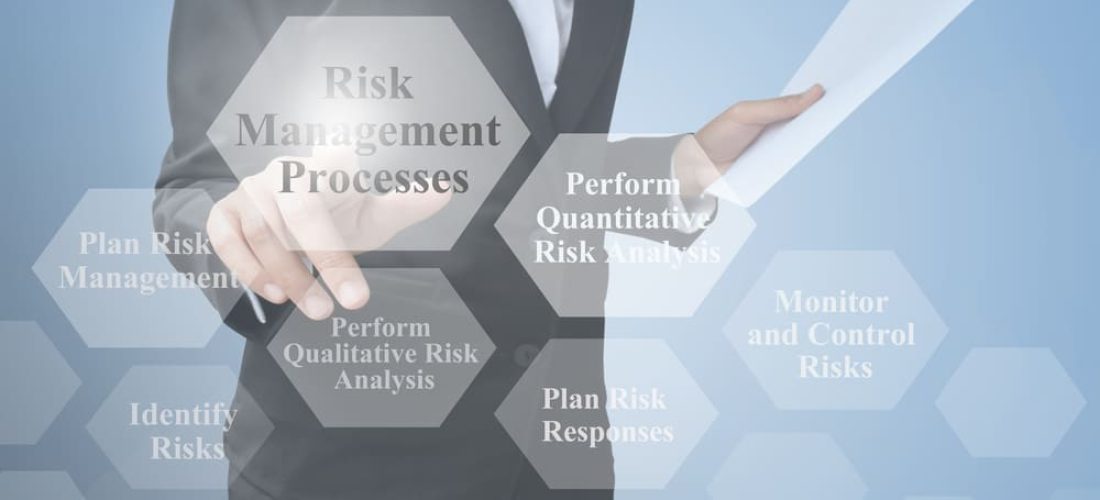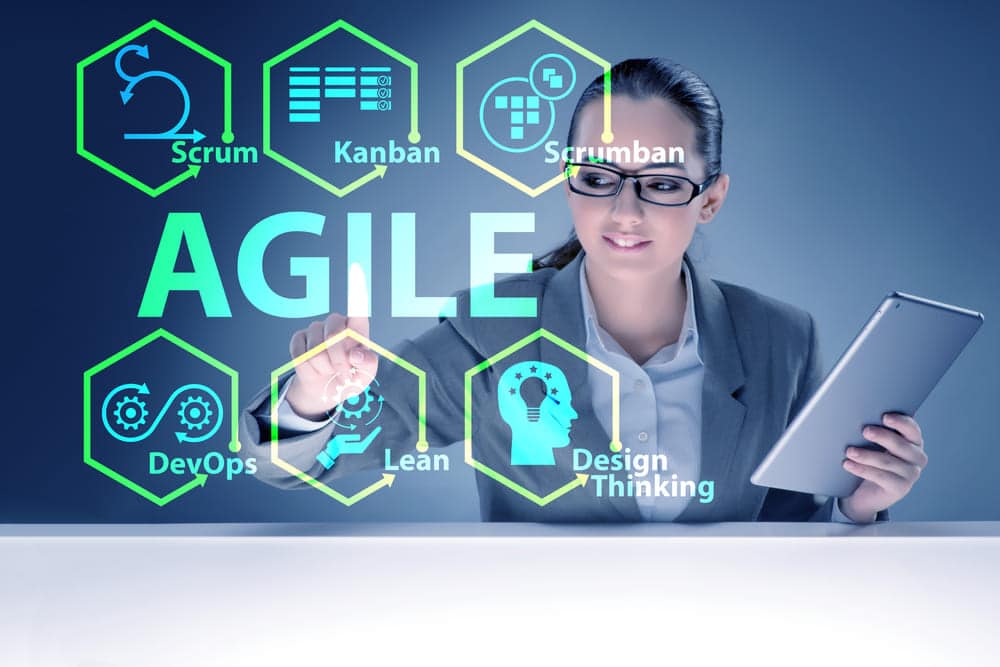Determining whether to use qualitative vs quantitative risk analysis is a critical decision in managing project uncertainty. Qualitative analysis gauges risk through expert insights, while quantitative analysis uses data to quantify potential impacts. This article clarifies these distinct approaches, helping you decide which is best for your project’s risk management plan.
Further Reading: Mastering Risk Management Plan: Essential Steps For Leaders
Key Takeaways
- Qualitative risk analysis relies on human judgment to prioritize risks subjectively, ideal for smaller projects and flexible decision-making, but can introduce bias and lacks numerical precision.
- Quantitative risk analysis uses statistical data and techniques to objectively evaluate risks, well-suited for larger projects requiring greater accuracy, but is resource-intensive and relies on the quality of data.
- Integrating qualitative and quantitative risk analysis can provide a comprehensive approach to risk management, tailored to specific project needs and constraints.
Understanding Risk Analysis
Risk analysis is a crucial step in the risk management process that helps organizations identify, assess, and prioritize potential risks that could impact their objectives. It involves risk evaluation, which includes assessing the likelihood and potential impact of various risks and determining the best course of action to mitigate or manage them. Risk analysis can be performed using various techniques, including qualitative and quantitative methods.
Qualitative risk analysis, also known as qualitative risk assessment, is a subjective approach that relies on expert judgment and historical data to assess risks. It involves evaluating risks based on their severity and likelihood and prioritizing them accordingly. This method is often used when there is limited data or information available, or when the risks are complex and difficult to quantify.
On the other hand, quantitative risk analysis is an objective approach that uses mathematical models and data to assess risks. It involves assigning numerical values to risks and evaluating their potential impact on the organization. Quantitative risk analysis is often used when there is a large amount of data available, or when the risks are well-defined and can be quantified. This approach provides a more precise and detailed understanding of potential risks, making it invaluable for large-scale projects where accuracy is paramount.
Definition of Risk Analysis
Risk analysis is a systematic process used to identify, assess, and prioritize potential risks that could impact an organization or project. It involves evaluating the likelihood and potential impact of various risks and developing strategies to mitigate or manage them. This process is a critical component of risk management, which is essential for ensuring the success and sustainability of any organization or project. By performing risk analysis, organizations can proactively address potential risks, thereby minimizing their impact and enhancing overall resilience.
Understanding Qualitative Risk Analysis
Qualitative risk analysis which is also referred to as qualitative risk assessment, is the process of analyzing and prioritizing risks using human perception and judgment as a major basis. This involves identifying possible risks or opportunities and placing them in low, medium, or high categories by both likelihood and potential impacts through subjective analysis and risk prioritization. It involves finding the most important risks, estimating the likelihood of their occurrence, and using such data for making decisions, thereby, developing the relevant risk handling plan.
This method is especially well-suited for small-scale projects as it does not demand a lot of resources, but, at the same time, it is very effective in discovering potential hazards. When a qualitative risk analysis process is carried out in project management teams, they can prepare various strategies for dealing with risks identified and also create contingency plans if necessary. Furthermore, it provides clear lines of communication within the team concerning any possible risks or uncertainties that may appear during the performance of the project.

Definition and Characteristics of Qualitative Risk Analysis
Qualitative risk analysis is a subjective approach to risk analysis that involves evaluating risks based on their likelihood and potential impact. This non-numerical method relies heavily on expert judgment, experience, and historical data to assess risks. It is particularly useful when there is limited data or when the risks are complex and difficult to quantify. The key characteristics of qualitative risk analysis include:
- Subjective Approach: This method relies on the insights and experience of experts to assess risks, making it inherently subjective.
- Non-Numerical: Unlike quantitative methods, qualitative risk analysis does not involve numerical calculations or data analysis.
- Focus on Likelihood and Impact: Risks are evaluated based on their likelihood of occurrence and potential impact on the project or organization.
- Use of Expert Judgment: The assessment is based on the judgment and experience of experts, which can provide valuable insights into potential risks.
Key Components of Qualitative Risk Analysis
Qualitative risk analysis is based on several crucial elements. The most significant part of it is the professionalism and judgment by experts to assess and analyze risk to arrive at a level in distinct situations. The importance of expert opinion in this case is that these opinions are backed with years of experience that can reveal possible risks that may be missed.
The other important status is the use of a risk assessment matrix which helps in ordering risks as per their probability and severity on project goals. This method of risk categorization helps project managers in proper utilization of resources and in developing an appropriate response plan.
Advantages and Limitations of Qualitative Risk Analysis
Qualitative risk analysis is a preferred approach for project managers because of its simplicity and flexibility. Its subjective character gives it room to deal with risks, which is especially beneficial in complex or fast-changing projects. Risks can also be easily prioritized, hence improving the general risk management process.
Qualitative risk analysis has certain constraints. Subjectivity may lead to bias during the assessment process as the absence of numerical data may also result in less accuracy and some risks might be lost or underestimated.
Further Reading: Risk Management: Ultimate Guide to Navigating Uncertainties
Grasping Quantitative Risk Analysis
At the other side of the spectrum is quantitative risk analysis, which is a detailed study of numerical numbers of the current risks, also known as risk quantification. This method relies on verifiable data to assess the effect of risks in the form of cost overruns, scope creep, resource usage, and schedule slippage. It is particularly valuable when dealing with bigger projects where precision is key in the assessment of potential consequences.
In order to perform quantitative risk analysis effectively; quantitative risk analysis methods should be used such as decision tree analysis and Monte Carlo Simulation with a reliance on statistically derived data, especially in high-risk industries such as mining, oil and gas, or construction.
In risk management, quantitative risk analysis is about computations done to understand the numeric interpretations of how project objectives may be hit financially by possible threats. Statistics methods are used in combination with numeric values or methods inherent for this type of assessment, i.e., “quantitative risk analysis” within the risk assessment process.
The essential stages consist of determining risk-prone areas, calculating costs and probabilities and then qualitative analyses complementing decisions together, all depending on reliable raw data collected sources.

Quantitative risk assessment is a more measurable and quantitative approach, using realistic and measurable data to compute the impact values of risk with the probability of occurrence. Although quantitative risk assessment is more informative, it is also more complicated and may take more time than qualitative risk assessment. Quantitative data quality significantly influences efficiency in the context evaluating future risk-takers. Quality statistical inference will add value by eliminating costs that are morally or accidently generated by discrepancies in different forecasts.
Definition and Characteristics of Quantitative Risk Analysis
Quantitative risk analysis is an objective approach to risk analysis that involves evaluating risks using numerical data and statistical models. This data-driven method aims to quantify the likelihood and potential impact of various risks, providing a more precise and detailed understanding. Quantitative risk analysis is often employed when there is ample data available, or when the risks are well-defined and quantifiable. The key characteristics of quantitative risk analysis include:
- Objective Approach: This method relies on numerical data and statistical models, making it more objective than qualitative methods.
- Numerical: Quantitative risk analysis involves numerical calculations and data analysis to assess risks.
- Focus on Probability and Impact: Risks are evaluated based on their probability of occurrence and potential impact, providing a detailed risk profile.
- Use of Statistical Models: Techniques such as Monte Carlo simulations and decision trees are used to quantify the likelihood and potential impact of risks.
Key Components of Quantitative Risk Analysis
Quantitative risk analysis is dependent on statistical data to identify, and measure the potential risks which are done using numerical data and techniques. The quality of the information is an important factor in the reliability of the risk analysis. Quantitative risk assessments offer an essential part in this process, as they require assessment of risks through quantitative ways to separate and conduct a thorough analysis, which is difficult to measure the invisible dimensions of risk and calculate annual loss expectancy.
The role of the Monte Carlo simulations is also substantial in quantitative risk analysis when they allow for a mathematical assessment of uncertainties and their linked project risks. This approach also works well in the determination of probabilities for different outcomes. By use of the FAIR (Factor Analysis of Information Risk) model, this method utilizes statistical techniques and probabilities to decompose total risks into measurable components.
Advantages and Limitations of Quantitative Risk Analysis
Quantitative risk analysis has many advantages, e.g. objectivity and accuracy. The factual foundation of the model allows a smooth and objective risk landscape view necessary for the development of the informed decisions. It is statistical techniques that make an assessment of risks more precise, which in turn helps in better planning and deployment of risk mitigation actions.
Quantitative risk analysis can be hard to implement. It needs specific tools and professionals who may be resource-consuming. The result accuracy is to a great extent dependent on the quality of data used in the analysis and also correct model assumptions. Using insufficient or inaccurate inputs in this kind of risk assessment method, could compromise its validity.
Quantitative Risk Assessment
Quantitative risk assessment is a process of evaluating and quantifying the likelihood and potential impact of various risks. This approach uses numerical data and statistical models to assess risks and develop strategies to mitigate or manage them. Quantitative risk assessment is particularly valuable in industries such as finance, healthcare, and construction, where risks are well-defined and quantifiable. By providing a detailed and precise understanding of potential risks, this method helps organizations make informed decisions and develop effective risk management strategies.
Steps and Techniques
The steps and techniques involved in quantitative risk assessment include:
- Identify the Risks: Begin by identifying the potential risks that could impact the organization or project.
- Collect Data: Gather numerical data on the likelihood and potential impact of each identified risk.
- Analyze the Data: Use statistical models and techniques, such as Monte Carlo simulations and decision trees, to analyze the data.
- Evaluate the Risks: Assess the risks based on their probability and potential impact.
- Develop Strategies: Formulate strategies to mitigate or manage the identified risks.
- Monitor and Review: Regularly monitor and review the risks to ensure that the strategies remain effective.
Some common techniques used in quantitative risk assessment include:
- Monte Carlo Simulations: This statistical technique uses random sampling to model complex systems and evaluate the likelihood and potential impact of various risks.
- Decision Trees: These graphical tools help evaluate the likelihood and potential impact of risks and develop strategies to mitigate or manage them.
- Sensitivity Analysis: This technique assesses how changes in assumptions or variables affect the risk assessment, identifying the most significant factors.
- Expected Monetary Value (EMV) Analysis: This method evaluates the expected monetary value of risks, helping to develop strategies to mitigate or manage them.
- By following these steps and employing these techniques, organizations can perform comprehensive quantitative risk assessments, ensuring that all potential risks are identified, evaluated, and managed effectively.
Comparing Qualitative and Quantitative Risk Analysis Techniques
Comparing the methodologies used in both qualitative and quantitative risk analysis highlights their separate but complementary approaches in managing risks. Introducing risk measurement, qualitative assessment, being a process of subjective evaluation based on perception or judgment, is suitable for conceptual risks which need prompt implementation.
Whereas qualitative analysis is the subjective assessment of people’s feelings and personal values, quantitative analysis involves an objective assessment using numerical data and statistical tools in handling specific risks with a high level of accuracy. By realizing these differences of qualitative and quantitative approaches, organizations can make rational choices which approach to apply in their risk management strategies.
Each of these ways is beneficial in the risk management. The choice between the two is greatly influenced by specific project circumstances, including the scale of the project, resources, and the desired accuracy. The mixed qualitative and quantitative risk analysis often offers better and more efficient approaches to the risks management associated with numerous projects.
Sometimes both approaches should be used together to make a risk management strategy even more effective. Hence, this type of validation may be called the integration of quantitative and qualitative methods.

Factors to Consider When Choosing a Risk Analysis Technique
The selection of a risk analysis method would be based on the size and complexity of the project. For large projects, more advanced techniques are necessary, but for smaller ones, rather primitive tools can be enough. Resource availability also influences the selection process, including factors like time, skills, and money.
Another significant element is the target of accuracy in risk assessment. Quantitative approaches that are based on numbers may be more appropriate for high precision projects. When conceptual risks are present or when risks need to be prioritized as quickly as possible, qualitative methods would be more appropriate.
Combining Qualitative and Quantitative Approaches
In the context of risk management, an integration of qualitative and quantitative methods is usually considered the best way. The integration of these approaches allows project managers to evaluate measurable and less quantifiable risk types more thoroughly. This enables more precise risk mitigating strategies to be developed.
Challenges include information availability and resource constraints, subjective nature of qualitative assessments and collecting complex data for quantitative analysis. It is vital for project managers to critically assess how the data from each method supports or against each other so as to find a balance between them. In conclusion, an integrated approach will greatly complement the attempts of risk management and significantly improve the entire concept of Enterprise Risk Management (ERM) programs in general.
Tools and Techniques for Risk Analysis
There are various tools and techniques available for risk analysis and risk modeling, each offering unique benefits for evaluating and managing risks:
- Risk Assessment Matrices: These tables help evaluate risks based on their severity and likelihood, providing a visual representation that aids in prioritizing risks.
- Decision Trees: These diagrams help evaluate risks and determine the best course of action by mapping out possible outcomes and their associated probabilities.
- Sensitivity Analysis: This technique involves evaluating how changes in assumptions or variables affect the risk assessment, helping to identify which factors have the most significant impact on risk.
- Monte Carlo Simulations: These statistical models use random sampling to evaluate risks, providing a range of possible outcomes and their probabilities.
- Expert Judgment: This approach relies on the expertise and experience of individuals to assess risks, often used when data is limited or when dealing with complex risks.
By utilizing these tools and techniques, organizations can perform comprehensive risk analysis, ensuring that all potential risks are identified and appropriately managed.
Practical Steps to Perform Qualitative and Quantitative Risk Analysis
Irrespective of the preferred method – qualitative, quantitative, or combined, risk analysis usually consists of several essential phases. These are including the process of identification and assessment of potential risks, concentration on each identified risk in order to quantify and measure its probability and impact on project activities, as well as development of a risk response plan.
These steps help the project managers to know the types of risk that their project might encounter and also to come up with the best strategies of how they can manage them. This provides ability to be better prepared for any surprise event that might influence the project success.
Implementing Qualitative Risk Analysis
To perform qualitative risk analysis, the first step is expert judgment. This enables the project managers to utilize a large source of knowledge and talent that allows them to identify and evaluate the possible risks efficiently. The use of historical data can also be of much help in this process as it presents lessons learnt from past activities.

In qualitative risk analysis implementation, the use of a risk assessment matrix is one crucial component. Categorizing risks according to their probability and impact help the project managers to effectively rank these risks and produce appropriate response plans.
Implementing Quantitative Risk Analysis
In the first steps of quantitative risk analysis implementation, statistical data is collected, potential risks are identified and measured, the impact is estimated, and the likelihood of occurrence is assessed. Risk simulation, including techniques like Monte Carlo simulation, is necessary for an efficient assessment of different results and of the risks involved in the project.
The use of data analysis software is an essential component of quantifying risk in projects. These devices have several advantages including final decision for object-based analysis. They also help in risk prioritization, financial planning, and stakeholder engagement improvement and they provide an objective view of the project’s total risk landscape.
Using such techniques and tools, the project managers are able to get a clear idea of project quantifiable risks. This helps them make informed decisions that encompass all issues associated with possible hazards in their projects.
Best Practices for Effective Risk Analysis
To perform effective risk identification and analysis, organizations should follow these best practices:
- Identify All Potential Risks: Begin by identifying all potential risks that could impact the organization’s objectives. This comprehensive approach ensures that no significant risks are overlooked.
- Evaluate Risks Objectively: Assess risks based on their severity and likelihood, avoiding personal opinions or biases. This objective evaluation helps in prioritizing risks accurately.
- Use Multiple Techniques: Employ a combination of qualitative and quantitative methods to assess risks. This multi-faceted approach provides a more thorough understanding of potential risks.
- Consider Multiple Scenarios: Evaluate risks under different scenarios, including best-case, worst-case, and most-likely-case scenarios. This helps in preparing for various possible outcomes.
- Review and Update Regularly: Regularly review and update the risk assessment to ensure it remains relevant and effective. This ongoing process helps in adapting to new risks and changing circumstances.
By adhering to these best practices, organizations can enhance their risk management efforts, ensuring that potential risks are effectively identified, assessed, and managed.
Overcoming Common Challenges in Risk Analysis
Organizations often face several common challenges when performing risk analysis and risk mitigation, including:
- Limited Data: Having limited data or information available to assess risks can be a significant hurdle. To overcome this, organizations can rely on expert judgment and historical data to fill in the gaps.
- Complexity: Dealing with complex risks that are difficult to quantify or assess can be challenging. Using multiple techniques, such as qualitative and quantitative methods, can help in managing these complexities.
- Uncertainty: Uncertainty and ambiguity can make risk assessment difficult. Considering multiple scenarios and using sensitivity analysis can help in addressing this challenge.
- Bias: Personal biases and opinions can skew risk assessments. Ensuring an objective evaluation and involving multiple stakeholders can help mitigate this issue.
- Resource Constraints: Limited resources, such as time, money, or personnel, can hinder risk analysis efforts. Seeking external expertise, such as consultants or advisors, can provide additional support and resources.
By addressing these challenges with appropriate strategies, organizations can improve the effectiveness of their risk analysis, ensuring that potential risks are accurately identified and managed.
Selecting the Right Risk Management Strategy
The final achievement of a project depends on the wise choice of the risk management and risk control approach applicable for the situation. This choice will also be affected by a number of different factors, including scale of the project, available resources, and level of precision that is sought. Frequently, utilizing both qualitative and quantitative ways in risk analysis is the most potent way.
Having knowledge of the advantages and disadvantages of qualitative and quantitative methods in risk analysis, managers become able to make appropriate choice as to the approach that is the most suitable for the needs of the project at hand. It is vital to control the risks, regardless of whether they select a less objective approach like qualitative analysis or select a more objective choice, like quantitative assessment (or even use a combination) to ensure successful completion of the project.
Summary
The identification of the risk factor is very important for the effective execution of any project. Qualitative and quantitative measures are equally important in a systematic risk approach.
Qualitative analysis provides a simple and effective method of recognizing and ranking risks based on their impact and probability. Further, the quantitative evaluation gives a more precise and detailed description of the magnitude of risks that aids the project manager in making informed decisions.
Using both qualitative and quantitative approaches, project managers can perform a full risk evaluation which takes into account, for instance, potential impact, probability, and level of uncertainty. Such an integrated model ensures that project managers know how risks can be handled and how to lead the project to successful outcomes.
Appropriate application of these analytical methods by project managers to control risks remains the critical way to enhance project success chance.
Frequently Asked Questions
What is the difference between qualitative and quantitative risk analysis techniques?
Quantitative risk analysis relies on the information that is fact-based and proven, while qualitative risk analysis is based on personal judgment or assessment. The both methods are applied in the course of effective analysis of plausible perils. Qualitative risk has a huge influence on quantitative risk.
What is a quantitative risk analysis?
The quantitative methods of risk analysis demand the use of numbers and complex information to determine the possible financial threats to a project or a business endeavor. This approach allows for estimates of the likelihood and consequences of certain events that can affect a project.
When should I use quantitative risk analysis?
Large projects, with high risks and require accuracy, prefer the use of quantitative analysis. This methodology gives a more realistic evaluation of the potential threats and the likely consequences in general.
What are some real-world examples of qualitative and quantitative risk analysis?
The construction industry applies risk analysis as a sensing of the project scope risk, while the IT industry uses it as a sensing of financial liability due to cyber threats. The practical applications of both qualitative and quantitative risk analyses are rather common.
The qualitative risk analysis methods are mostly used for scope related risks detection while the quantitative methodology is applicable for evaluation of financial effects of cyber-security threats. Each method has a particular purpose with respect to the method.

















12 Responses
I don’t think the title of your article matches the content lol. Just kidding, mainly because I had some doubts after reading the article. https://www.binance.com/en-IN/register?ref=UM6SMJM3
I don’t think the title of your article matches the content lol. Just kidding, mainly because I had some doubts after reading the article.
Choose the best pod for vaping 24 when you need rich hits, rapid recharging, and long-lasting durability. It’s the trusted option for vapers looking to enjoy consistent performance all day.
Your article helped me a lot, is there any more related content? Thanks!
I like the efforts you have put in this, regards for all the great content.
Your point of view caught my eye and was very interesting. Thanks. I have a question for you.
I don’t think the title of your article matches the content lol. Just kidding, mainly because I had some doubts after reading the article.
After Iinitially left a comment I aplpear to haave clicked on the -Notify
me when new comments are added- checkbox annd fom nnow on each time a comment is added I recieve four emails with the exact same
comment. There has to be a means yyou aare able to remove me from
that service? Kudos! https://z42Mi.mssg.me/
Your article helped me a lot, is there any more related content? Thanks! Vytvorení úctu na binance
Thanks for sharing. I read many of your blog posts, cool, your blog is very good.
I don’t think the title of your article matches the content lol. Just kidding, mainly because I had some doubts after reading the article. https://accounts.binance.info/register-person?ref=IXBIAFVY
Anyone tried betap yet? I’m always hunting for new betting platforms. Let me know if it’s worth my time and money, fam!